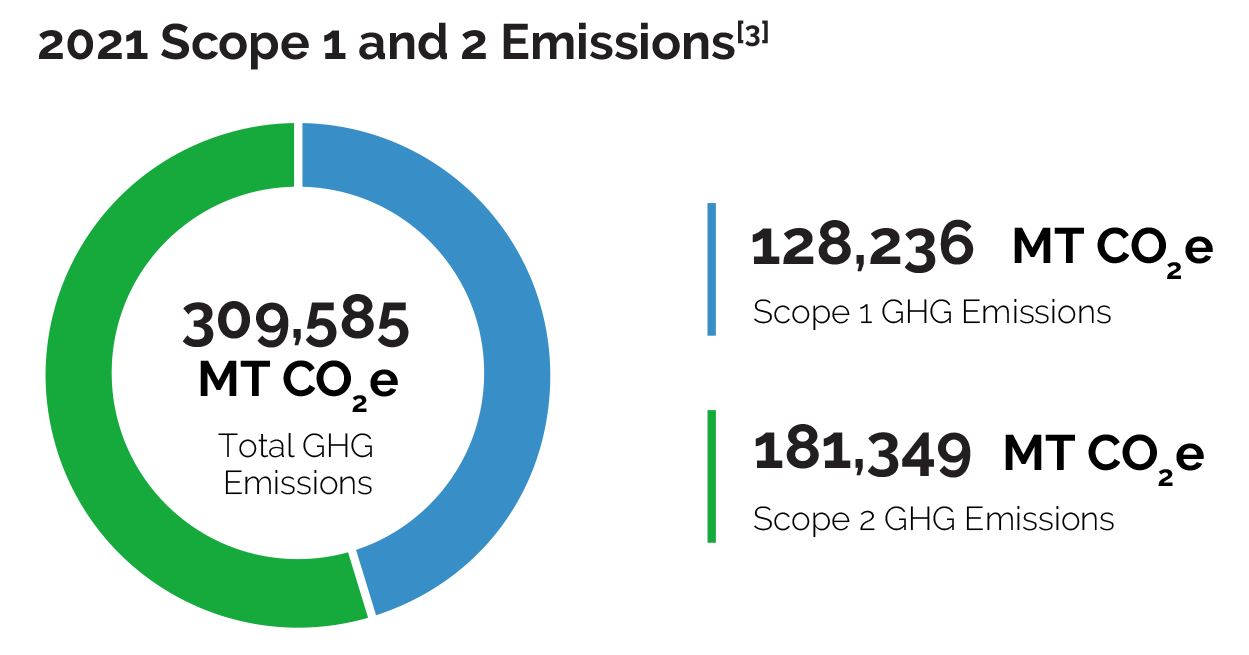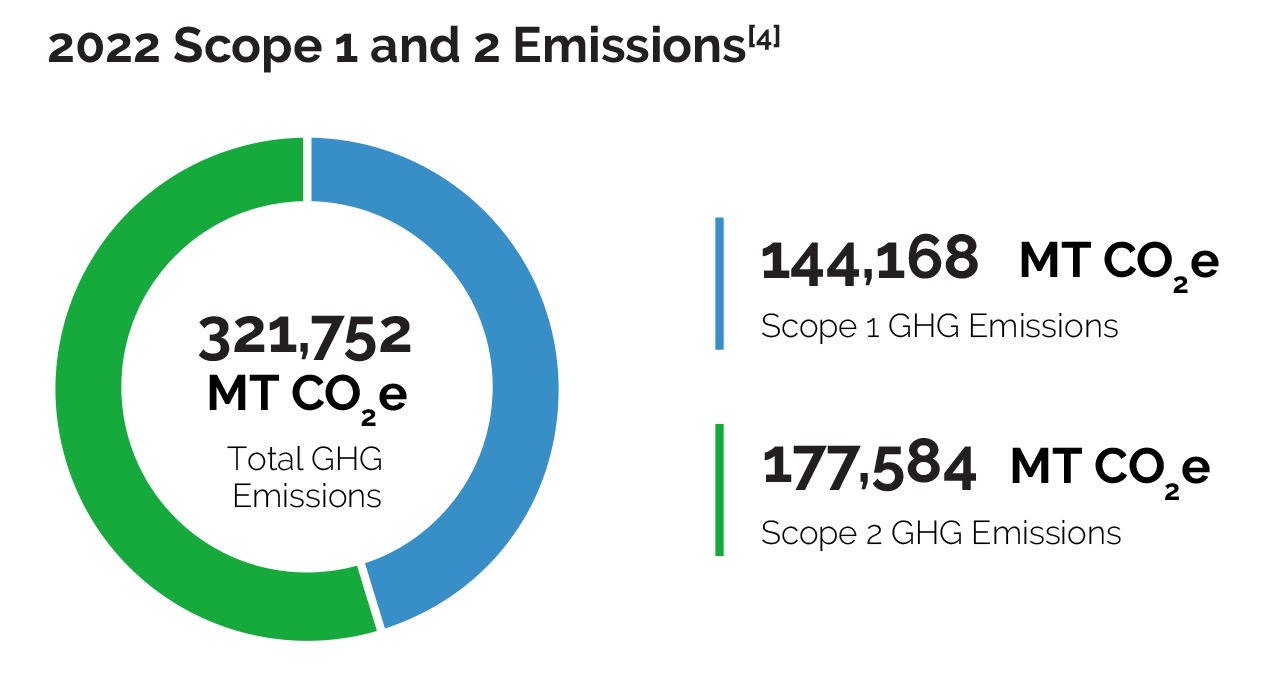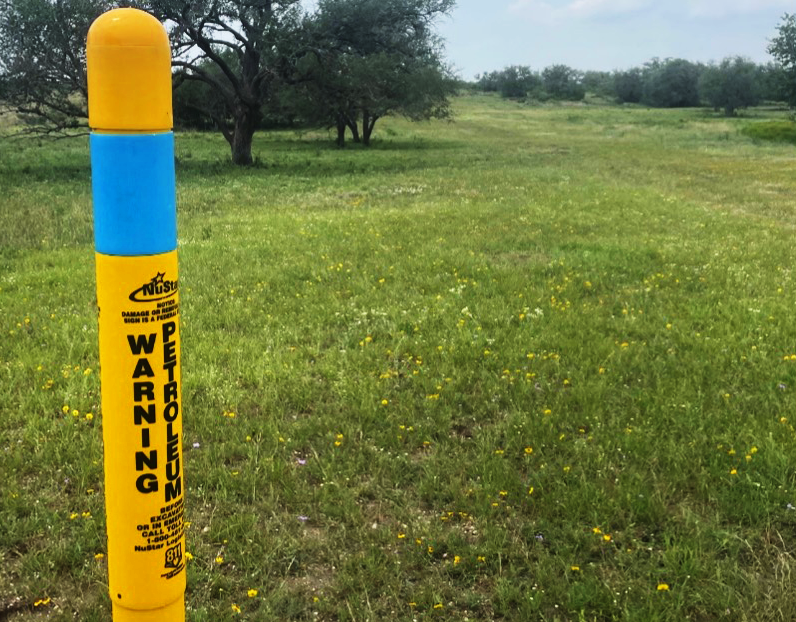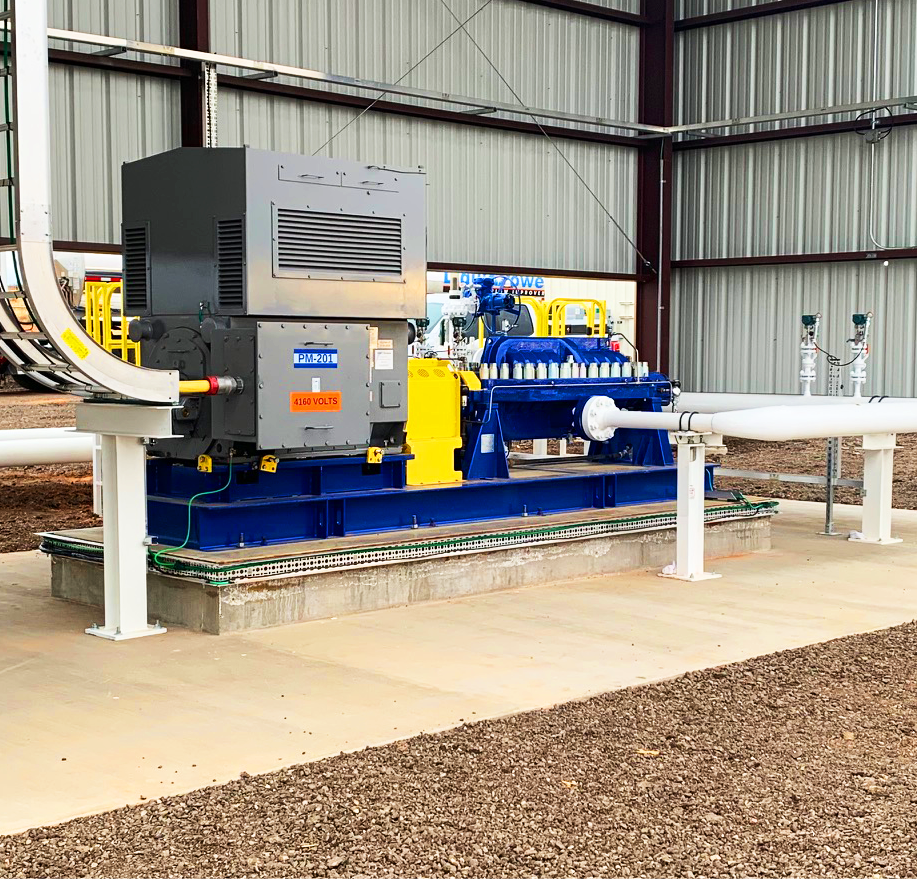Environmental and Safety Safely Moving Sustainable Energy
Safely Moving Sustainable Energy
200+
public awareness meetings held in 2022.
1,170
miles of pipeline inspected in 2022.
Pipelines and terminals provide the most environmentally responsible and safest way[1] to transport and store the liquid fuels that power our everyday lives, as well as the ammonia that is integral to growing the food that nourishes our nation and the world.
[1] Source: “Lower Emissions,” Liquid Energy Pipelines Association, 2022
ProgramOperational Safety and PreparednessOccupational Health and Safety
Leader and Partner in Lower Carbon Intensity Fuels

NuStar’s continued commitment to the environment is evidenced in our responsible transportation and storage of liquid renewable fuels and ammonia. Renewable fuels, which include liquids that can be used with existing engines and refueling infrastructure, reduce transportation-related greenhouse gases now, meet the growing demand for energy, and avoid the environmental impacts associated with the construction of new infrastructure.
In furtherance of our sustainability efforts, NuStar is utilizing strategically positioned facilities to accommodate customer and state carbon emissions reduction goals. Pursuant to our Guiding Principle “Make a Difference,” we are focusing our strategic capital program on expanding our capabilities for storing renewable fuels especially on the West Coast. As new production and conversion supply projects for renewable diesel, sustainable aviation fuel, ethanol and other renewable fuels increase, NuStar expects to continue to play an integral role in storing the lower carbon intensity fuels that will help the West Coast states reach their goals of reducing transportation-related emissions through Low Carbon Fuel Standards. Since 2017, we have completed over a dozen projects as we developed our renewable fuels network on the West Coast. These include two renewable fuels projects we completed in 2022, which increased our renewable diesel storage capacity and augmented our ethanol transportation logistics capabilities at our Stockton, California facility. These two projects follow three other projects at the Stockton terminal to increase the terminal’s storage capacity of renewable diesel, biodiesel and ethanol by 254,000 barrels.
According to data from the State of California, in 2022, NuStar handled four percent of California’s total biodiesel volume, 11 percent of its ethanol volumes, approximately 18 percent of its renewable diesel volumes and 60 percent of its sustainable aviation fuel volumes. In fact, our renewable fuels-related services generated over 37 percent of our West Coast storage assets’ revenue, demonstrating NuStar’s ability to accommodate our nation’s evolving energy priorities.
Carbon emissions reduction goals in places like California are expected to continue to dramatically increase demand for renewable fuels in the West Coast region. In 2023, we plan to allocate $25 million to our West Coast Renewable Fuels Network to increase our renewable fuels storage capacity as renewable fuels become a larger percentage of the area’s total energy usage. These future projects further solidify the significant role that NuStar plays in facilitating the West Coast’s transition to low-carbon renewable fuels. We intend to continue converting tankage to renewable fuels as the market demands.


Our Ammonia System spans approximately 2,000 miles through our nation’s cornbelt between Louisiana and Missouri, and then northwest and east, to Nebraska and Indiana. NuStar’s pipeline offers the lowest-cost and emission option for transporting both imported and domestically produced ammonia to fertilize crops in our nation’s breadbasket.
Ammonia (NH3) is the basic building block for all types of nitrogen fertilizer, which is an essential nutrient for growing plants.
- About 80% of the 200 million tons of ammonia produced each year is used for fertilizer
- About 50% of the world’s food production depends on ammonia
Because traditional fossil-fuel ammonia production (i.e., “gray” ammonia) is estimated to contribute about 1% of global CO2 emissions, there is increasing interest in its de-carbonization through the production of “blue” and “green” ammonia, which are identical in chemical composition to “gray” ammonia.
- “Blue” ammonia is produced with natural gas, but the associated emissions are captured and stored
- “Green” ammonia is produced using renewable electricity to power an electrolyser to extract hydrogen from water and an air separation unit to extract nitrogen from air, which are then combined through a chemical reaction powered by renewable electricity, to produce aammonia

In addition, “blue” and “green” ammonia have potential for use as lower-carbon alternative fuels: for engines/turbines to generate electricity, in alkaline fuel cells, up-to-70% blend in internal combustion engine vehicles and for the maritime industry. NuStar is working with customers to develop projects to explore “blue” and “green” ammonia opportunities. For example, we have partnered with OCI Global (OCI) to build a new 14-mile pipeline segment to connect our existing ammonia pipeline to OCI’s ammonia facility in Wever, Iowa. We expect that the facility will be used to manufacture fertilizer and diesel exhaust fluid.[1] OCI has committed $30 million in capital expenditures for new ammonia cooling and storage infrastructure at their Wever facility and is expected to bring 1.1 million tons of blue ammonia capacity online in 2025 from the Gulf Coast. We expect that the ammonia transported by our pipelines will be used for existing applications and, in the near and long term, potentially for other new uses, such as renewable electricity generation and safe, efficient transportation for hydrogen to power fuel-cell vehicles.
[1] Diesel exhaust fluid enables NOx control through selective catalytic reduction in diesel engines.
NH3 Gas Turbine

NH3 Gas Fuel-cell Ship

NH3 -fueled Car

Safely Moving Liquid Fuels With Lower Greenhouse Gas (GHG) and Other Emissions
Energy-rich liquid fuels, including renewable fuels, are expected to be a necessary part of the nation’s energy framework for the foreseeable future. Given pipelines’ capability to transport liquid fuels in the most emission-efficient[1] and environmentally responsible manner[2], NuStar is uniquely positioned to continue serving customers into the future. The company’s exemplary safety and release record (as described elsewhere in this report) further support this fact.
The graphs on this page show NuStar’s GHG emissions in 2021 and 2022. In 2022, the company began tracking its Scope 1 and 2 GHG emissions to use as a benchmark in the future. NuStar has been working with third-party vendors to develop interactive data analysis tools that will provide actionable insights on the feasibility of GHG reduction and efficiency measures. Some of these measures have already been implemented, such as pipeline drag reduction and pump conversions from diesel to electric.
Managing renewable fuels in America’s existing pipelines and storage systems not only offers an immediate pathway to GHG reduction while still meeting the growing demand for energy, but also avoids the GHG that would be emitted to build new, non-liquid fuel infrastructure.


Transporting the volume NuStar moves through its pipelines in one day would require approximately
42%more GHGs.[5]
Pipelines' Proportions of Emissions[6]

[1]Source: “Lower Emissions,” Liquid Energy Pipelines Association, 2022
[2]Source: “Lower Emissions,” Liquid Energy Pipelines Association, 2022; “Pipelines are Safest for Transportation of Oil and Gas,” Manhattan Institute for Policy Research, 2013
[3]U.S. only. Does not include emissions from assets sold on October 8, 2021
[4]The calculated Scope 1 emissions increased between 2021 and 2022 due to a change in the saturation factor of gasoline trucks utilizing loading racks. Using the same methodology for both years would result in decreased Scope 1 emissions between 2021 and 2022. Specifically, using the updated methodology would result in a calculated Scope 1 emissions of 180,957 MT CO2e in 2021. For the sake of consistency, we are keeping the reported 2021 emission the same. See page 48 for further information regarding the GHG calculations.
[5]Source: “Pipelines Have the Lowest Greenhouse Gas Emissions” Association of Oil Pipe Lines 2021
[6]Sources: “Crude Oil Investing in a Carbon Constrained World: 2017 Update”, ARC Energy Research Institute, using input data from the U.S. Department of Energy National EnergyTechnology Laboratory to define the U.S. Refined Average (2014), 2017
Environmental Management Program
NuStar proactively incorporates environmental excellence into the company’s operations, which are subject to extensive international, federal, state and local environmental laws and regulations across multiple types of media (e.g., air, water, waste, etc.). In 2022, our capital expenditures attributable to minimizing environmental impacts totaled $5.9 million. NuStar is investing in emission reduction technology to comply with and, in many cases, exceed applicable regulatory requirements. These measures enable NuStar to prevent and detect leaks and control emissions and include specialized internal floating roofs, external floating roofs, vapor combustion units and vapor recovery units.
NuStar is committed to maintaining compliance with environmental permits, laws and regulations, as well as best practices through our Environmental Management Program (EMP). Based on the NuStar’s Guiding Principles of “Teamwork” and “Communication,” the EMP empowers our employees to efficiently collaborate and minimize our environmental impact, implement our commitment to biodiversity, manage environmental requirements and ensure employees have the resources and training to continue improving our environmental performance. These principles are consistently checked and implemented through our robust internal environmental audit program, which is a fundamental aspect of our EMP. In 2022, NuStar completed 53 on-site and desktop environmental audits confirming and improving the environmental performance of our facilities. The audit process incorporates measures to ensure that impacts to sensitive receptors, such as those related to Environmental Justice, biodiversity and aquatic resources are avoided and/or mitigated to the greatest degree possible. Between 2012 and 2022, the annual number of environmental audits by NuStar has increased by nearly 100%. Additionally, our employees work closely with industry trade associations to develop and implement best practices and foster a cooperative relationship with government regulators, non-governmental organizations (NGOs) and other stakeholders.

The heart of our EMP is the NuStar Safety and Environmental Management System (NuSEMS), which ensures a sustainability mindset in our work with our Plan-Do-Check-Act (PDCA) cycle. The PDCA approach codifies continuous evaluation and improvement into our policies and procedures and is heavily informed by the American Petroleum Institute (API) 1173 Pipeline Safety Management System(PSMS). The PSMS also helps NuStar measure and improve Health, Saftey and Environmental (HSE) performance. Together, the NuSEMS and PSMS provide a strong foundation for our environmental and safety culture. To learn more about Occupational Health and Safety at NuStar, please refer to the Occupational Health and Safety page of this report.

A member of The Environmental Partnership[1]
[1]The Environmental Partnership is comprised of companies in the U.S. oil and natural gas industry committed to continuously improving the industry’s environmental performance.

NuStar is committed to preserving the natural landscape. As an example, after becoming aware of 11 mature oak trees in the planned pathway of a required pipeline relocation on our San Antonio East Pipeline, NuStar modified the project design to avoid the trees and their root systems. We did this by utilizing approximately 750 feet of incremental horizontal directional drilling (HDD). We found it beneficial to the environment to preserve the trees, despite incurring a cost of approximately $80,000 as well as the cost of extra equipment and personnel associated with HDD.

NuStar’s recent Amarillo-Tucumcari-Albuquerque (“ATA”) System upgrades provide an instructive example of the energy efficiency improvements associated with many of the company’s pipeline maintenance and reliability projects. As part of this project, NuStar replaced two 800-horsepower diesel motors with electric pumps, which decreased the emissions associated with those pipeline operations and the use of environmentally sensitive chemicals (e.g., coolant, antifreeze) required for diesel engines. Further, NuStar applied a drag reducing agent in the pipeline segment. This allowed us to reduce the amount of energy necessary to pump the same amount of product with lower emissions!

Operational Safety and Preparedness

We focus on being responsible stewards of our communities, our employees and the environment and providing reliable, safe service to our customers. We are proud that in 2022, we were once again a leader in safety by maintaining a significantly better Total Recordable Incident Rate (TRIR) than the industry average. We continue to offer one of the safest options for responsibly transporting, delivering and storing liquid fuels. During 2022, our releases represented just .00028% of the 868 million barrels we moved, and we recently received the International Liquid Terminals Association’s (ILTA) annual Safety Excellence Award for the 13th time.
Our excellent safety record is due to the dedication of our employees to NuStar’s Guiding Principles of “Commitment” and “Safety,” through our extensive inspection program and our Control Center oversight 24-hours a day, seven days a week and 365 days a year
For our pipelines, our Control Center proactively identifies
and prevents releases using an Automatic Leak Detection system and flow and pressure monitors, which are consistently updated based on the changing characteristics of our pipeline layout. Our primary control room also has redundant client and server hardware, as well as redundant power and communications infrastructure. Our backup control center is also fully functional, tested and operated on a quarterly basis and located within 30 minutes of our primary Control Center

We inspect over 99% of our pipeline miles with high-tech, in-line inspection tools, with only 1% requiring other techniques. We are also dedicated to the safety of our storage tank facilities. For this part of our infrastructure, we comply with American Petroleum Institute (API) internal and external inspection standards, such as API 653 Tank Inspection, Repair, Alteration and Reconstruction, and maintain an integrity management program that includes daily audio, visual and olfactory inspections.
Our health, safety and environmental goal is simple: we aim for zero — zero injuries, zero incidents, and zero releases. We strive to prevent incidents by participating in joint drills and exercises with regulatory agencies and performing internal exercises, including full-scale personnel deployment, tabletop exercises, equipment deployments and unannounced preparedness tests. During these exercises, we continuously evaluate and improve our Corporate and other Emergency Response Plans. Exercises like these enhance NuStar’s ability to respond effectively across departments, regions and business units.

In 2022, NuStar
Occupational Health and Safety
VPP Star Sites
![]()
91% of our eligible U.S. terminals have attained VPP Star Status,
OSHA’s certification recognizing employers and employees who demonstrate exemplary achievement in the prevention and control of occupational safety and health hazards and the development, implementation and continuous improvement of their safety and health management system.

Safety” is NuStar’s first Guiding Principle, and the safety of our employees, contractors and communities is NuStar’s #1 priority. In 2022, we are proud to have once again maintained one of the best Total Recordable Incident Rates (TRIR) and the highest number of Occupational Safety and Health Administration (OSHA) Voluntary Protection Program (VPP) Star Sites in the independent liquids storage industry. This leading safety record comes from our strong culture of empowering and engaging employees and contractors to put safety first in our daily operations. We make sure every employee and every contractor know that they not only can, but should, stop work if they feel there is anything unsafe about any given situation.
In 2022, as in years past, our dedication resulted in a safety performance better than our peers. Our TRIR was 17.4 times better than the Bureau of Labor Statistics (BLS) comparison data for the Bulk Terminals Industry and 2.6 times better than that of the BLS Pipeline Transportation Industry.
Three-Year Total Recordable Incident Rate[1]

Our strong safety record is due in large part to the emphasis our Board, CEO and senior management have placed on empowering our employees to put safety first through their support and commitment to the OSHA VPP. By prioritizing the OSHA VPP certification process, we have provided our employees with training, accountability and an ownership stake in our safety culture, which in turn drives our safety performance
Call Before You Dig
![]()
We support and encourage all members of our communities in the United States to utilize the (811) Call Before You Dig service. NuStar responded to 74,346 Call Before You Dig Requests in 2022.

OSHA VPP is an elite program that promotes effective worksite-based safety and health. In the program, management, employees and OSHA establish cooperative relationships at workplaces that have implemented a comprehensive safety and health management system. Certification as a VPP Star Site is OSHA’s official recognition of the outstanding efforts of employers and employees who have achieved exemplary occupational safety and health.
 We are especially proud of how NuStar’s employees embrace OSHA VPP. We have more VPP Star-certified sites than any other independent liquids storage company in the United States, and we plan to make 100% of our eligible sites VPP Star certified.
We are especially proud of how NuStar’s employees embrace OSHA VPP. We have more VPP Star-certified sites than any other independent liquids storage company in the United States, and we plan to make 100% of our eligible sites VPP Star certified.
In addition to our companywide dedication to OSHA VPP, nine NuStar employees have been recognized as OSHA Special Government Employees. These are NuStar employees who have been trained by OSHA to perform occupational health and safety audits at the plants and facilities of other companies. OSHA utilizes these trained individuals to perform audits on the companies, which brings enhanced expertise to the OSHA program and allows our employees to learn from the best practices at those facilities.
[1]Industry averages derived from 2019–2020 Bureau of Labor Statistics Data. 2020 averages carried forward to 2021 for illustration purposes.
With safety being our number one priority among our Guiding Principles, it is no surprise that employees have begun taking their safety training from the workplace into the communities they call home. Since NuStar’s inception, our employees have been doing great things for their communities and to honor those efforts we created “The Heart of a Hero” award, which recognizes employees who go above and beyond the call of duty to save the lives of others.
Thanks to our stellar employees and their passion for helping others, we have had several employees who have literally saved lives in their communities. At our Moorhead, MN facility, several employees jumped into action when a fuel truck driver from another company suddenly collapsed. After calling 911, our employees were able to determine the driver was experiencing cardiac arrest and was deteriorating quickly. Fortunately, all of our employees were prepared with their CPR/AED and emergency response training, which enabled them to revive the driver. By the time the ambulance arrived, the driver was conscious, talking, and gave full credit to the NuStar team for saving his life!
In our Central West North region, our employees noticed a peer showing signs of heat exhaustion. These employees jumped into action, rushing the employee to a Heart of a Hero HIGHLIGHT STORY cooler environment where healthcare professionals could address his ailing health. And, in another heroic story, an employee received a call from a distressed co-worker while he was at home. The employee dropped everything and rushed over to assess the situation. It was determined he was showing signs of a stroke and the co-worker was rushed to get the emergency medical attention he so desperately needed.
And in our West region, a NuStar employee rose to the occasion when he was called upon to join a massive search and rescue effort when a two-year-old went missing in Portland, OR. During the difficult search mission, the volunteers encountered many coyotes and even a mountain lion. Fortunately, the 15-hour search mission paid off as the little girl was found and returned to her family safe and sound thanks to the selfless heroes in the community -- like our employee!
These are just a few of the many stories of our employees’ heroic efforts to make their communities safer and happier places to live, work and play!



